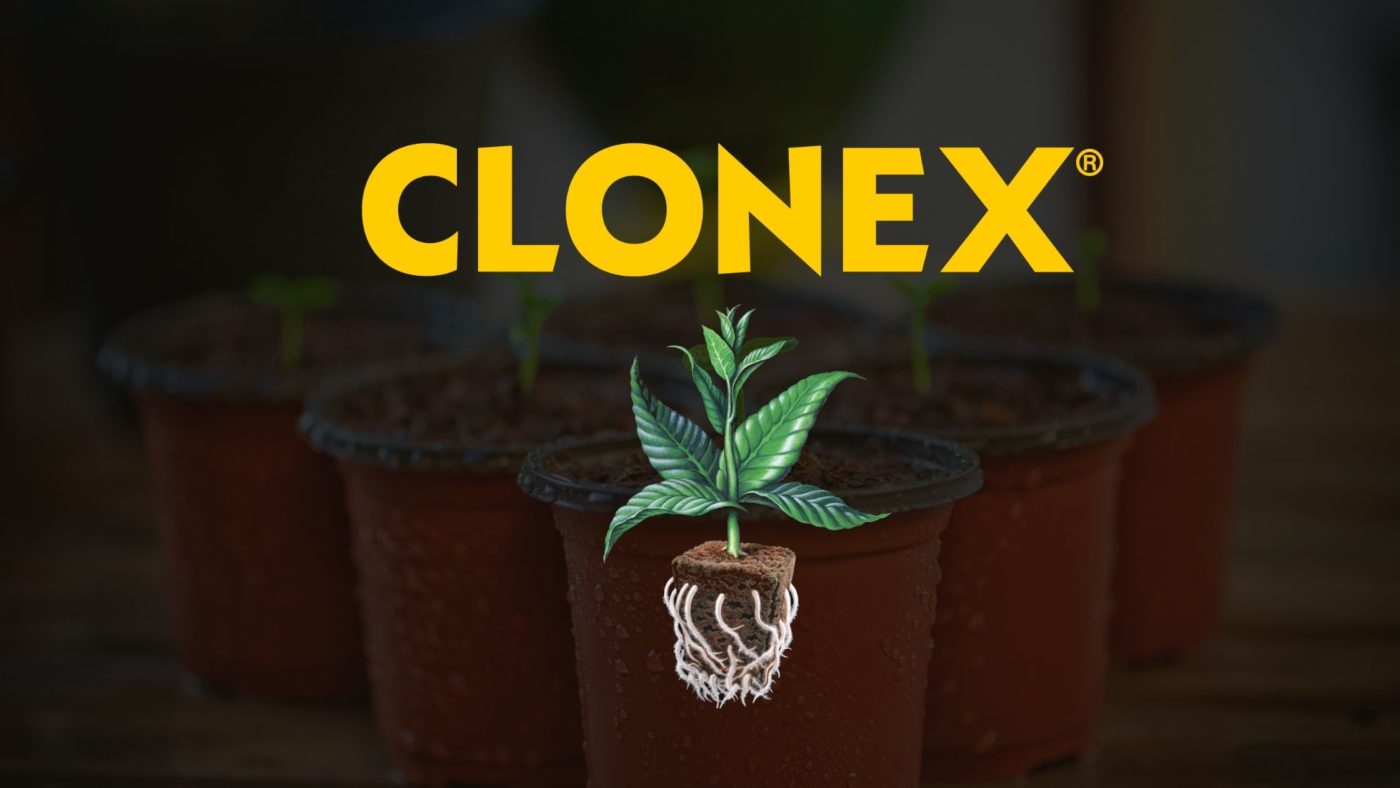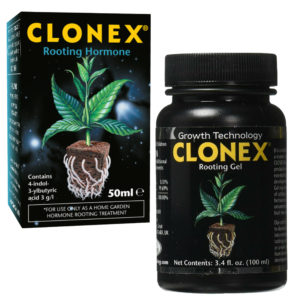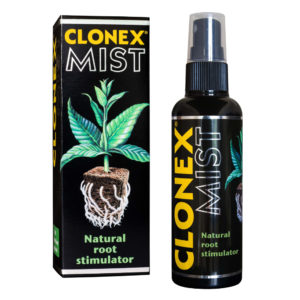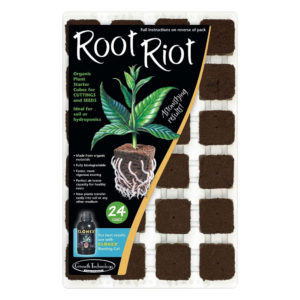Did you ever wish you could regrow an outstanding plant that gave you those dream results? Well, now you can do it effortlessly with Clonex rooting compound gel.
But before we dive into the exciting world of Clonex, let’s learn a little more about plant rooting hormones. Why, when, and how they can help a grower develop better plants.
Ok, gardeners! Here are the basics.
What Is Rooting Hormone?

Mother Nature created plants with a set of hormones, just like us. One of these hormones is named auxin. Auxins play an essential role in the growth and behavioural processes in plant life cycles.
Auxin is produced in the stem tip of the plant, where growth is necessary. The most common use of this hormone is to stimulate root initiation of plant cuttings.
In studying auxin particles, experts have been able to recreate similar structures called synthetic growth regulators. Their purpose is to replicate the natural growth conditions and stimulate the growth of the roots.
Rooting hormones boost the possibility of your cuttings taking root. Moreover, the roots will normally grow sooner and be more robust with the use of plant-rooting hormones. Using a rooting hormone makes the propagating of ‘difficult’ plants much more effortless. Below we will explore the types of products available on the market so that you can pick your favourite.

Types of Rooting Hormones
There are three types of forms of root hormone stimulators – liquid, powder and gel.
Liquid
The liquid rooting hormone is the most common type of rooting hormone out there.
Tip: When choosing a product, pay attention if the rooting hormone is standard strength or a concentrate. The standard rooting gel can be applied directly out of the bottle, while the concentrated product must be diluted first.
To use the ready-to-go liquid properly, use a different container and dip every cutting separately. A simple action like this will prevent any disease from contaminating your cuttings.
When using a concentrated rooting liquid hormone, it is necessary to dilute it before application. Not only does it tend to be more cost-effective than the ready-to-go format, but it also allows more closely calibrating the dilution to the plant that you are trying to propagate.
Powder

The biggest asset to the powder formula is the long-lasting shelf life of the product. This simple benefit is why many gardeners prefer powdered rooting hormone.
Hormone rooting powders often also contains cytokinins (another plant growth hormone), fungicides, and other chemicals, which reduce the risk of the plants succumbing to fungal infections.
Using the powder rooting hormone is also relatively easy, but it needs attention:
- First, start by dipping the newly cut pieces into the water so the powder can stick easier to the cuttings and seal the cut area.
- Then, pour some of the powder into a separate container or plate to avoid contamination.
- Finally, dip the wet cuttings into the powder and shake off any excess before planting them into the soil.
Gel
Using a rooting gel has been one of the most convenient ways to clone a plant, compared to powder and liquid formulas. The cuttings need to go right into a small container filled with the gel and then into the growing medium. It is as simple as that.
It is time to show you why the Growth Technology Clonex Gel product is one of the best rooting gels you can find.
Growth Technology Clonex Rooting Gel
Clonex is a thick rooting hormone gel. It attaches to plant stems to help cuttings during the rooting development process. The studies show that the root systems of plants grown with Clonex end with 30% longer roots, up to 156% more roots and rooting up to 10 days faster than usual.
Features:
Benefits of dipping the plant cuttings in it, Clonex Rooting Gel:
- It eliminates the risk of infection or embolism by sealing the cut tissue instantly;
- Contains rooting hormone at 3000ppm, the full strength required for explosive root development;
- Does not wash off during watering;
- Keeps stem rot at bay (antifungal agents);
Clonex Rooting Gel: How to Use Guide
If you have reached this far in the article, you probably already know why cloning plants is beneficial to the continued success of your garden.
Clonex is designed as a ready to use product, which does not require to be diluted.
Dip the cut end into Clonex rooting gel before placing it into a rooting plug, right after the cutting is separated by the mother plant.
For better results, use the Clonex rooting gel alongside Clonex Mist. You will also need to:
- Spray Clonex Mist over the mother plant 2 – 3 times a week before taking cuttings.
- Spray your cuttings with Clonex Mist right before planting them and placing them in a dome propagator.
- Monitor and re-apply the Clones Mist spray on the cuttings every 2 – 3 days.
Clonex Mist is a foliar spray that is for both mother plants and clones to stimulate root development.
Clonex and Growing Medias
Clonex can be used with a wide range of growing media, including organic peat moss, Perlite, Vermiculite, Rockwool, and proprietary mixes recommended for cuttings. For the best results, use Clonex with Root Riot plant cubes available in convenient trays of 24 cubes and larger packs.
Tip: Put your preferred medium in a clean plastic seed tray and water it thoroughly. Make sure to set adequate drainage to avoid waterlogging.
Taking Plant Cuttings (Softwood and Semi-Hardwood)

Pick four or five pairs of young grown leaves from your healthiest plants. Start cutting the shoot tips off with a clean knife or blade. Make clean 45-degree cuts across the base of the cutting just below the lowest leaf node. Then remove with hand the two lower pairs of leaves.
In a separate container, pour a small amount of Clonex rooting gel and dip the cutting right after being separated from the plant. Next, dip the cutting into Clonex about 15 mm. Place the cutting into the propagation medium just deep enough to support the newly planted cutting. As soon as cuttings are inserted, they should be misted with tepid water and placed into a propagator.
Important! Do not dip cut tissue into the original container, and do not return any unused Clonex as this might contaminate the remaining gel.
The Cutting Environment
Both soft-tip and semi-hardwood cuttings require to be cultivated in humid conditions. Using a propagator is the ideal tool to maintain a warm and heated environment easily.
Furthermore, if you wish, add gentle bottom heat (around 21°C–24°C) will help most plants and is essential for many species. Mist cuttings regularly – condensation on the underside of the dome indicates adequate humidity.
ⓘ To learn more about propagators and how to maximise your results with their help, follow through and take a quick peek at our article on the subject.
Hardening Off New Roots
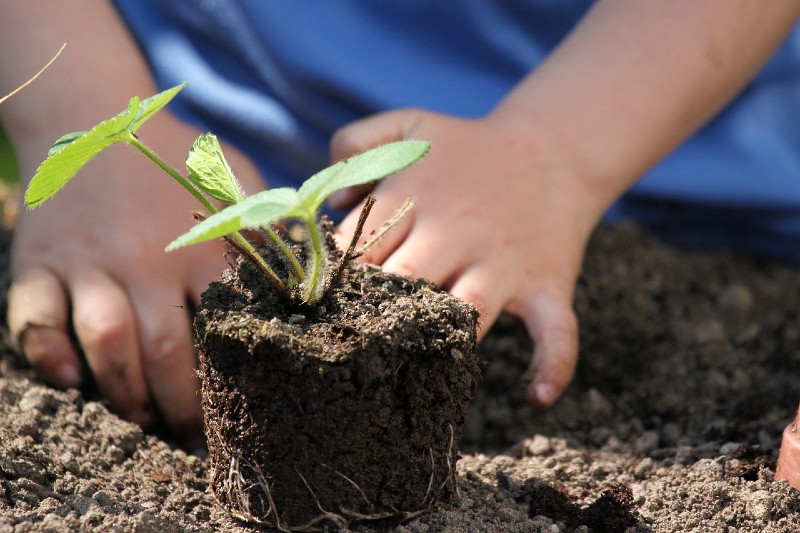
As expected, new roots will develop. Once your plant begins growing the rooting system, it will need to be hardened off. The first step is allowing more airflow by removing the cover over the cuttings. Do not remove it all at once; just increase the amount of opening each day and finally remove the top cover altogether. When the newly planted cuttings grow strongly, they can be placed into the larger Rockwool cubes or potted into soil or coco coir medium. Place soil carefully around new roots to avoid damaging them.
Tips for success
The Hydrostork team would love to give every gardener the best possible advice to grow perfect, lush plants. Here are some more essential tips for our community:
- The best time to take cuttings is in the morning when they’re full of water.
- When taking cuttings, use a sterilised knife. Strip off a couple of leaves at the bottom of the plant and make a 45-degree cut.
- Before you start, wash your hands and sterilise your equipment.
- Avoid using scissors. Instead, choose a sharp blade or a knife.
- Cuttings from flowering shoots are less likely to root.
- Applying too much rooting hormone can damage the cuttings.
- Reduce the surface area from which the cuttings can lose moisture by cutting large leaves in half.
- Don’t get the rooting hormone on the foliage because this causes leaves deformations.
- Use bottom heat and propagators to create a warm environment and aid root growth.
- While your cuttings are developing their root systems, make sure they are given enough moisture. Because they do not have strong roots yet, they will dehydrate quickly unless they live in a high humidity environment. This is what the dome propagators and daily misting solve.
Happy and successful growing, everybody!

